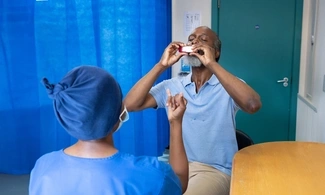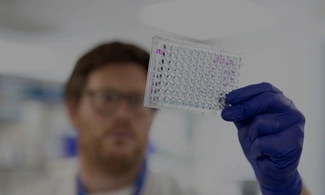This section has information on pulmonary haemorrhage (bleeding into the lung) in children.
On this page:
- What is pulmonary haemorrhage?
- What causes pulmonary haemorrhage?
- What are the symptoms of pulmonary haemorrhage?
- How is pulmonary haemorrhage diagnosed?
- What is the treatment for pulmonary haemorrhage?
- What’s the outlook for pulmonary haemorrhage?
- More support
What is pulmonary haemorrhage?
Pulmonary haemorrhage is bleeding into the lung. It happens when blood leaks from blood vessels in the windpipe or airways into the main lung. Pulmonary haemorrhage is a rare condition and can affect people of all ages.
Pulmonary haemorrhage can start gradually and continue for a long time, or it can be a sudden life-threatening event. Some people may have a lung bleed when they have an infection.
For premature, newborn babies with a low birth weight who are already critically ill, it’s a very serious complication. They will be treated in intensive care.
Pulmonary = lung-related
Haemorrhage = bleeding
What causes pulmonary haemorrhage?
There are many possible causes of pulmonary haemorrhage. In children, infection is a common cause.
Doctors can’t always identify the cause. Where no cause can be found, this is called idiopathic pulmonary haemorrhage.
Idiopathic = there is no known cause
Bleeding may come from just one area or from many. Doctors will try to find out where it’s coming from. There may be an underlying chest disease causing the bleeding. This is important to know because it helps them decide which treatment is likely to work best.
Bleeding from one area of the lung (localised bleeding)
If there is bleeding from one area of the lung, this is called localised bleeding.
Causes of localised pulmonary haemorrhage include:
- infections such as pneumonia, tuberculosis, cystic fibrosis or other forms of bronchiectasis
- congenital lung malformations
- physical trauma, for example injury in a car crash
- a weakness in the blood vessels
- lung tumours.
Bleeding from different parts of the lung (diffuse bleeding)
If bleeding is coming from several different parts of the lung, this is called diffuse bleeding.
If your child has diffuse bleeding, doctors need to know if their lungs are inflamed. This is because diffuse lung bleeding with inflammation has different causes than without inflammation. They are also treated differently.
When there is no lung inflammation, diffuse bleeding may be caused by:
- a rare lung condition called idiopathic pulmonary haemosiderosis
- complications after a bone marrow transplant
- pulmonary hypertension.
When the lungs are inflamed, diffuse bleeding might be caused by conditions including:
What are the symptoms of pulmonary haemorrhage?
If your child has pulmonary haemorrhage, you may see blood in their nose or on their face. In some cases, they may also be struggling to breathe. However, bleeding in the lungs may not be obvious because many patients do not cough up blood.
If the pulmonary haemorrhage is long-term (starts gradually and continues for a long time) your child may:
- have a fever
- cough
- be losing weight
- become very pale due to anaemia
- become particularly breathless when they exercise
- become easily tired.
Is coughing up blood always a sign of pulmonary haemorrhage?
Coughing up blood can be a sign of pulmonary haemorrhage, but this is rare in children. This is because children tend to swallow any blood they cough up.
When children do cough up blood, it usually comes from places other than the lungs – such as the nose, or from bleeding in the gut.
Blood coughed up from the lungs is bright red and frothy. Children may feel a tingling in their throat or a gurgling in the chest before coughing up blood.
If you or your child is coughing up small spots of blood, call 111. If you’re coughing up more than a few spots or finding it hard to breathe too, call 999.
How is pulmonary haemorrhage diagnosed?
Your child may need tests to diagnose pulmonary haemorrhage and find out where the bleeding is coming from. These may include:
- a chest X-ray - blood in the lungs shows as a shadow on an X-ray. If only one part of the lung is affected, this can help doctors work out where the blood is coming from and how much blood there is
- a bronchoscopy, where a thin, flexible tube is used to look inside your lungs
- a lung biopsy, where a small piece of tissue is removed from the lungs for testing
- blood tests.
If bleeding into the lung happens for a long time, it may lead to iron deficiency anaemia. Your child may have a blood test to check for this. They may also have blood tests to check for connective tissue diseases (the name for conditions that affect the parts of the body that connect the structures of the body together).
What is the treatment for pulmonary haemorrhage?
The treatment for pulmonary haemorrhage will depend on how severe the bleeding is, and what’s causing it.
If your child is losing a lot of blood and it’s happening quickly, doctors will first aim to stabilise your child’s breathing and control blood loss. Your child may need to be ventilated (given support to breathe with a machine) and given a blood transfusion.
If there’s only a small amount of bleeding, it’s more important to target the cause of the bleeding.
If the bleeding is coming from one specific site in the lungs, it may be possible to stop it using:
- bronchoscopy - to identify bleeding points and in some cases enable directly applied treatment with agents such as adrenaline that cause blood vessels to constrict and reduce or stop the bleeding. Bronchoscopy can help guide your healthcare team to locate and embolise the bleeding vessel
- embolisation - a procedure to block blood vessels in the area to stop the bleeding
- surgery – this is usually only needed if bronchoscopy and embolisation don’t work. Surgery on a tumour or other lesion may be required to remove the area causing the bleeding.
What’s the outlook?
How well your child responds to treatment for pulmonary haemorrhage depends on lots of things. They include:
- the kind of bleeding happening in the lung (localised bleeding, diffuse bleeding with inflammation, diffuse bleeding without inflammation)
- how severe and rapid the bleeding is
- why the bleeding is happening.
Pulmonary haemorrhage in children is a serious condition, which can in some rare cases be fatal or lead to long-term health problems.
In most cases, the condition is either mild or has an underlying cause that will require treatment. Treating the underlying cause will reduce the risk of pulmonary haemorrhage happening.
Milder cases generally have a good outlook. However, if your child has had a pulmonary haemorrhage, they should get specialist input to help diagnose and treat any underlying causes.
More support
Having a child affected by pulmonary haemorrhage can be worrying. Find out where to get information and support when your child is diagnosed with a lung condition. It’s important you take time to take care of yourself, as well as your child. Talk to your doctor or nurse if you feel like you’re struggling to cope. You can also always call our helpline – they can help answer your questions or worries. Call 0300 222 5800, Monday to Friday between 9am – 5pm (excluding bank holidays).
You may also want to join our Parent and Carer Support Network which provides support and a space for parents and carers of children with lung conditions to come together.
There is more information on acute idiopathic pulmonary haemorrhage of infancy (a form of bleeding in the lung in children) on the chILD foundation website.
This content is currently being reviewed. Updated information will be available soon.








